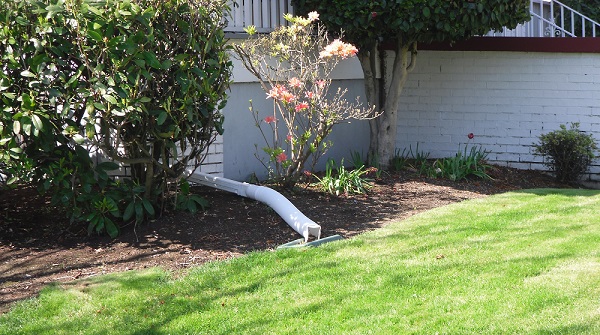
February 9, 2015, by Blue-Green team
Green Infrastructure, Groundwater and the Sustainable City
In early November 2014, I had the pleasure of attending a lecture titled ‘Green Infrastructure, Groundwater and the Sustainable City’ given by Professor Larry Band, who is Voit Gilmore Distinguished Professor of Geography and Director of the Institute for the Environment at the University of North Carolina and Visiting Professor, Chinese Academy of Science. The lecture was organised by the Cabot Institute at the University of Bristol, and formed part of the Birdsall-Dreiss Distinguished Lecture Series, sponsored by the Geological Society of America.
Larry opened by talking about the experiences of Baltimore City and County in Maryland, USA, in investigating and managing water quality issues throughout the catchment. The city itself is about the size of Bristol, and has suffered from chronic water quality issues in the nearby Chesapeake Bay. This has been partly due to sewer overflow during severe rainfall but also from regular sewer leaks during baseflow and other sources such as agricultural and horticultural ground surface flushing during moderate rainfall. The City and state were sued by the EPA (Environmental Protection Agency) and agreed to spend $1bn in retrofitting the sewer network under a Clean Water Act settlement.
Larry described some of the analysis that had been undertaken in order to identify pollution sources. The work of Kaushal et al (2011) demonstrates how different nitrogen and oxygen isotopes are derived from different pollution sources. For example, wastewater tends to be rich in N15 and low in O18. Sampling across the catchment showed particular areas where the different pollution sources were to blame. For example, the Baisman Run area is a low-density urban area with large green spaces, where runoff from streets and gardens and occasional leakage from septic tanks were the main pollution sources. Comparatively, the W263 area is high-density urban with many impervious surfaces. Here, there is a complex ‘matrix’ of underground pipes and services that Larry described as an urban ‘Karst’ (a highly conductive underground landscape, usually formed by soluble rock). There is a risk in these areas of ageing foul sewers becoming pervious and slowly releasing pollution even during baseflow.
Larry went on to discuss some of the planning and modelling that had been undertaken to assess the potential for green infrastructure to help with these problems. Bhasker and Welty (2012) had showed that the amount of evapotranspiration in the Baltimore city watersheds was noticeably lower than in an average rural watershed. This suggested the potential to use green infrastructure to detain water and prevent it entering the sewer network, where it could potentially cause overflows and pollution incidents downstream. Larry showed how the hydrological tool RHESSys was used to create a neighbourhood model, in which the effects of downspout disconnection and rain garden creation could be investigated.
One of the most interesting parts of the presentation for me was the discussion around adoption, and encouraging private ownership and management of green infrastructure features. Larry emphasised the importance of good stakeholder engagement, and demonstrated some of the outputs of an online visualisation tool which would allow people to see what SuDS in their neighbourhood or on their property would look like. Some people had negative perceptions of neighbourhood green infrastructure, fearing that it would encourage the presence of rats and other vermin close to their homes, so building public support was vital.
Given the challenges in the UK of encouraging SuDS construction, and their adoption once constructed, it seems sensible to look overseas for case studies (both successful and unsuccessful). Public engagement in WSUD (Water Sensitive Urban Design) in Baltimore seems to have been strongly encouraged with both educational programmes and financial incentives such as free services and rebates (see www.bluewaterbaltimore.org). Such lessons could be very helpful in implementing SuDS in the UK.
Blog post by Ian Corder, University of Nottingham.
References:
Aditi S. Bhasker and Claire Welty. Water Balances along an Urban-to-Rural Gradient of Metropolitan Baltimore, 2001–2009, Environmental & Engineering Geoscience, 2012, 18(1), pp 37-50
Sujay S. Kaushal, Peter M. Groffman, Lawrence E. Band, Emily M. Elliott, Catherine A. Shields and Carol Kendall. Tracking Nonpoint Source Nitrogen Pollution in Human-Impacted Watersheds, Environmental Science & Technology, 2011, 45(19), pp 8225–8232
No comments yet, fill out a comment to be the first

Leave a Reply